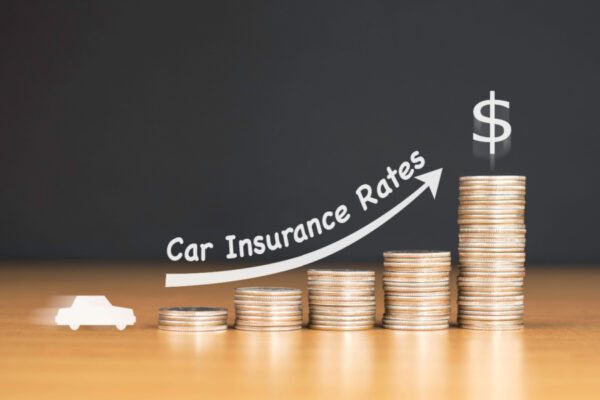Rising inflation and prices combined with widespread rate inadequacy among insurance carriers caused unprecedented financial challenges in the insurance industry during the second quarter of 2022. As a result, AM Best downgraded its outlook on the personal lines insurance market from stable to negative, primarily due to the declining personal auto insurance market, and continued to maintain its negative outlook for 2023.
Carriers face various regulatory hurdles preventing them from achieving necessary auto insurance rate increases post-pandemic as they struggle to get ahead of current trends. According to AM Best, the auto insurance sector’s inability to achieve underwriting profitability in 2022, combined with higher-than-average losses, justifies the rating downgrade.
Auto policyholders face continued rate increases and potentially challenging renewal processes in 2023. Drivers with a history of auto claims may experience even more significant rate increases.
As drivers struggle with rising costs in all areas of everyday life, minimizing auto insurance premium increases without sacrificing coverage remains a major concern for U.S. drivers throughout 2023. Working closely with an experienced agent to effectively navigate this challenging insurance environment is crucial.
2022 Recap
The personal auto insurance market was hit by a high number of losses, primarily driven by inflation. Throughout 2022, inflation levels remained higher than during the past 40 years. By August 2022, the consumer price index had risen 8.3%. Market conditions triggered auto premium increases, but insurers could not achieve financial stability.
- Private Passenger auto liability loss ratios during the first half of 2022 rose 11% from 60.1% to 7.5% year-over-year. Auto physical damage loss ratios rose 16% during the same period.
- The average private passenger collision claim rose 36.5% between quarter one of 2020 and quarter one of 2022.
According to Insurify’s insurance experts, one in five US drivers reported multiple auto insurance rate increases throughout 2022. Nearly half experienced at least one rate increase. Auto insurance rates went up for US drivers by an average of 9% in 2022.
Compared with the prior year’s data, more drivers are considering switching insurers or dropping their coverage, despite the serious risks associated with driving without proper auto insurance liability coverage.
According to the National Highway Traffic Safety Administration (NHTSA), motor vehicle traffic fatalities rose 10% from 2020 to 2021, resulting in the highest number of accident-related fatalities since 2005 and the largest year-over-year increase on record.
These factors contribute to a volatile market marked by high prices for all parties involved, and these effects may continue in the short term.
What to Expect in the Future
The factors affecting the insurance industry in 2022 will continue to drive rate increases throughout 2023. More accidents, inflation-driven auto repair cost increases, rising medical and litigation costs and more frequent and severe natural disasters are predicted to be key factors in ongoing rate increases in the auto insurance industry.
According to a recent Insurifty report, US drivers can expect an average auto insurance premium rate increase of 7% by the end of 2023. On average, drivers will spend $1,895 more during 2023 for the same auto coverage they had at the end of 2021.
Unfortunately, industry experts are not optimistic about the personal auto insurance market’s outlook for 2023. The market is predicted to be plagued by high loss cost severity, driven by high rates of motor vehicle accident fatalities, rising medical costs, higher used car prices, increasing costs to repair vehicles, and continued labor market and supply chain struggles.
Although insurers look to offset these high losses with higher premiums, insurance shoppers and consumers are looking to keep costs as low as possible amid high inflation and economic woes. Potential solutions may include telematics and usage-based insurance, but the return on such solutions remains to be seen.
Consumers can expect higher costs for 2023 and should work with their insurance agent to discuss how the market volatility may affect them.
Tips for Insurance Buyers
It can sometimes seem like the forces determining your insurance rates are beyond your control. But, as an insurance buyer, it’s important to know how your premiums are calculated, what trends influence the market and what you can do to get the best price.
Consider the following tips for mitigating your auto insurance costs:
- Match your vehicle to your budget
- Bundled home and auto insurance to take advantage of discounts on both policy types.
- Increasing deductibles can help reduce auto insurance rates.
- Report your actual milage to your insurer if you drive less than 5,000 miles per year.
- Ask your agent to help you shop around.
The amount of money you could save on car insurance during 2023 varies widely depending on your coverage needs, driving history, current policy costs and how much you use your vehicles throughout 2023.
Work with your agent to evaluate your current coverage needs and bring your policy into alignment. Your agent can help you determine whether you may be eligible for discounts. They can also help you shop around for a new insurance carrier to achieve the optimal balance of price and value.
This document is not intended to be exhaustive, nor should any discussion or opinions be construed as legal advice. Readers should contact legal counsel or an insurance professional for appropriate advice. For more details regarding the information contained in this report, contact The Horton Group, Inc. today.
In addition to helping you navigate the insurance market, The Horton Group, Inc.has resources to assist in your risk management efforts. Business owners who proactively address risk, control losses and manage exposures will be adequately prepared for changes in the market and will get the most out of each insurance dollar spent.
Material posted on this website is for informational purposes only and does not constitute a legal opinion or medical advice. Contact your legal representative or medical professional for information specific to your legal or medical needs.




